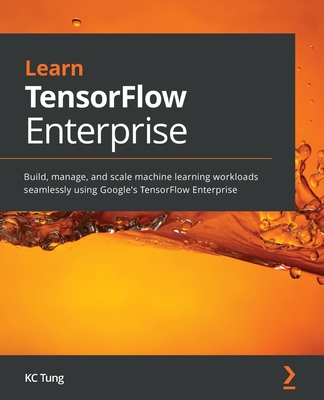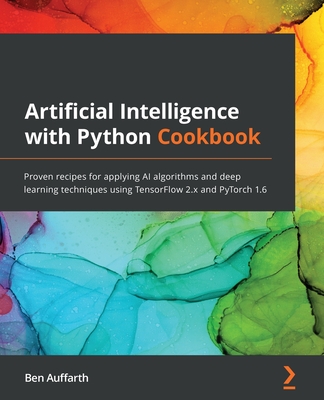Visualization for Artificial Intelligence
暫譯: 人工智慧的視覺化
Liu, Shixia, Yang, Weikai, Wang, Junpeng
- 出版商: Springer
- 出版日期: 2024-12-22
- 售價: $2,170
- 貴賓價: 9.5 折 $2,062
- 語言: 英文
- 頁數: 132
- 裝訂: Hardcover - also called cloth, retail trade, or trade
- ISBN: 3031753399
- ISBN-13: 9783031753398
-
相關分類:
Data-visualization
海外代購書籍(需單獨結帳)
相關主題
商品描述
This book explores how visualization provides an effective way of improving not only the interpretability but also the generalization capabilities of machine learning models. It shows how visualization can bridge the gap between complex models or algorithms and human understanding while also facilitating data curation and model refinement. Therefore, visualization for artificial intelligence (VIS4AI) has become an emerging area that combines interactive visualization with machine learning techniques to maximize their values. VIS4AI techniques focus on every phase of the machine learning life cycle, from data preprocessing to model development and deployment. These techniques are closely aligned with the well-established data and model pipelines in machine learning. In the data pipeline, they contribute to improving data quality and feature quality, including training data cleaning and feature engineering. In the model pipeline, they support (1) model development by focusing on model understanding, diagnosis, and steering; and (2) model deployment by enabling decision explanation, model performance monitoring, and model maintenance.
This book provides a framework of VIS4AI and introduces the associated techniques in the two pipelines. It emphasizes the importance of interactive visualization in AI and presents various visualization techniques for different purposes. It also discusses the challenges and opportunities of VIS4AI and proposes several promising research topics for future work, such as improving training data using complementary modalities, online training diagnosis, fitting the dynamic nature of AI systems, and interactively pre-training and adapting foundation models. Overall, this book aims to serve as a resource for researchers and practitioners interested in both visualization and artificial intelligence.
商品描述(中文翻譯)
本書探討了可視化如何有效地改善機器學習模型的可解釋性和泛化能力。它展示了可視化如何彌合複雜模型或演算法與人類理解之間的鴻溝,同時促進數據整理和模型精煉。因此,人工智慧的可視化(VIS4AI)已成為一個新興領域,結合互動可視化與機器學習技術,以最大化其價值。VIS4AI 技術專注於機器學習生命週期的每個階段,從數據預處理到模型開發和部署。這些技術與機器學習中成熟的數據和模型管道密切相關。在數據管道中,它們有助於改善數據質量和特徵質量,包括訓練數據清理和特徵工程。在模型管道中,它們支持(1)模型開發,專注於模型理解、診斷和引導;以及(2)模型部署,通過啟用決策解釋、模型性能監控和模型維護來實現。
本書提供了 VIS4AI 的框架,並介紹了兩個管道中相關的技術。它強調了互動可視化在人工智慧中的重要性,並呈現了各種不同目的的可視化技術。它還討論了 VIS4AI 的挑戰和機會,並提出了幾個未來研究的有前景主題,例如使用互補模態改善訓練數據、在線訓練診斷、適應人工智慧系統的動態特性,以及互動式預訓練和調整基礎模型。總體而言,本書旨在成為對可視化和人工智慧感興趣的研究人員和實踐者的資源。
作者簡介
Shixia Liu is a professor at Tsinghua University. Her research interests include explainable machine learning, visual text analytics, and text mining. Shixia was elevated to an IEEE Fellow in 2021 and inducted into IEEE Visualization Academy in 2020. She is an associate editor-in-chief of IEEE Transactions on Visualization and Computer Graphics and is an associate editor of Artificial Intelligence, IEEE Transactions on Big Data, and ACM Transactions on Intelligent Systems and Technology. She was one of the Papers Co-Chairs of IEEE VIS (VAST) 2016 and 2017 and is in the steering committee of IEEE VIS (2020-2023).
Weikai Yang is an Assistant Professor at the Data Science and Analytics Trust, holding a joint appointment at the Computational Media and Arts Thrust (CMA) in the Information Hub, at The Hong Kong University of Science and Technology (Guangzhou). He received his Ph.D. in Software Engineering under the supervision of professor Shixia Liu and his B.S. degrees from Tsinghua University. His research primarily focuses on the intersections between visual analysis and machine learning, with the goal of helping general users to understand large-scale data and utilize machine learning models more effectively and efficiently by incorporating their knowledge and feedback.
Junpeng Wang is a Research Scientist at Visa Research. He received his B.Eng. degree in software engineering from Nankai University in 2011, his M.S. degree in computer science from Virginia Tech in 2015, and his Ph.D. degree in computer science from the Ohio State University in 2019. Junpeng's research interests lie broadly in explainable artificial intelligence, visual analytics, and deep learning. He is the recipient of the 2021 IEEE TVCG Best Reviewer Award and multiple best paper awards, including the Best Paper Award at IEEE PacificVis 2018, the Best Paper Honorable Mention Award at IEEE VIS (VAST) 2018, and the Best Paper Award at IEEE VIS (SciVis) 2019.
Jun Yuan is a Researcher at Tencent. His research interests lie in explainable artificial intelligence. He received his Ph.D. in Software Engineering under the supervision of Professor Shixia Liu and his B.S. degrees from Tsinghua University.
作者簡介(中文翻譯)
劉世霞是清華大學的教授。她的研究興趣包括可解釋的機器學習、視覺文本分析和文本挖掘。劉世霞於2021年被提升為IEEE Fellow,並於2020年被納入IEEE視覺化學院。她是《IEEE視覺化與計算機圖形學期刊》的副主編,並擔任《人工智慧》、《IEEE大數據期刊》和《ACM智能系統與技術期刊》的副編輯。她曾擔任IEEE VIS (VAST) 2016和2017的論文共同主席,並在IEEE VIS的指導委員會中任職(2020-2023)。
楊偉凱是香港科技大學(廣州)數據科學與分析信託的助理教授,並在計算媒體與藝術推進(CMA)中擔任聯合職位。他在劉世霞教授的指導下獲得了軟體工程的博士學位,並在清華大學獲得了學士學位。他的研究主要集中在視覺分析與機器學習的交集,旨在幫助一般用戶理解大規模數據,並通過整合他們的知識和反饋,更有效和高效地利用機器學習模型。
王俊鵬是Visa Research的研究科學家。他於2011年在南開大學獲得軟體工程的工學學士學位,於2015年在維吉尼亞理工大學獲得計算機科學的碩士學位,並於2019年在俄亥俄州立大學獲得計算機科學的博士學位。王俊鵬的研究興趣廣泛涵蓋可解釋的人工智慧、視覺分析和深度學習。他是2021年IEEE TVCG最佳審稿人獎的獲得者,並獲得多個最佳論文獎,包括2018年IEEE PacificVis最佳論文獎、2018年IEEE VIS (VAST)最佳論文榮譽提名獎和2019年IEEE VIS (SciVis)最佳論文獎。
袁俊是騰訊的研究員。他的研究興趣集中在可解釋的人工智慧。他在劉世霞教授的指導下獲得了軟體工程的博士學位,並在清華大學獲得了學士學位。












